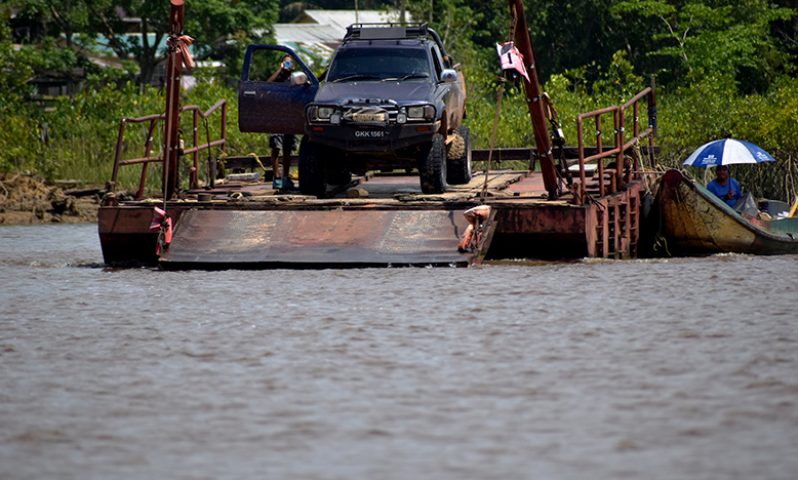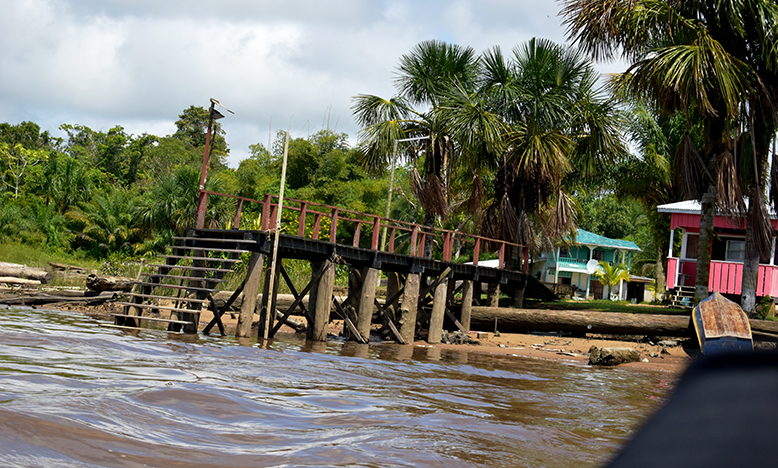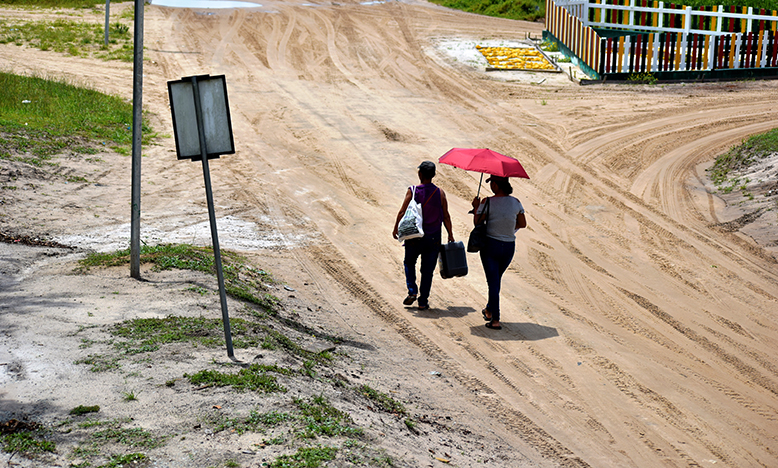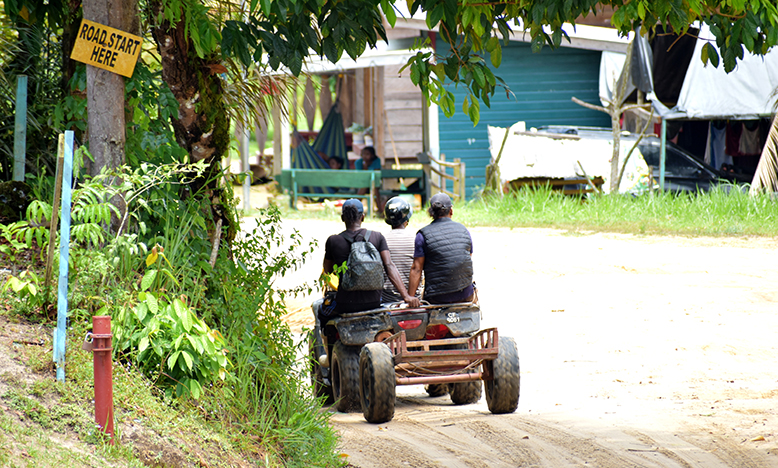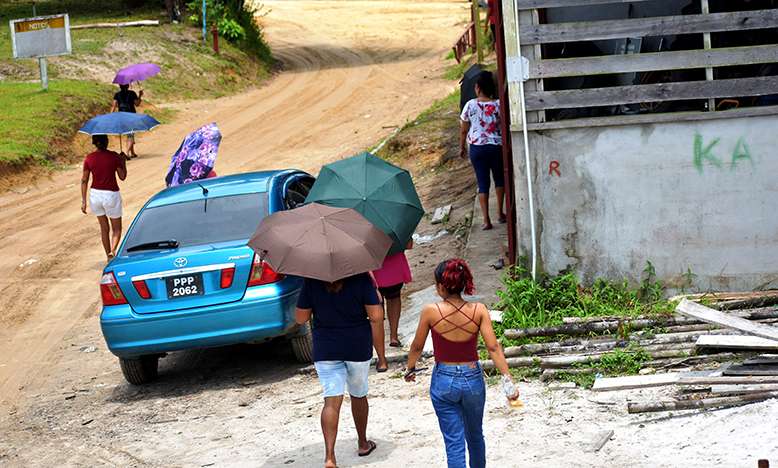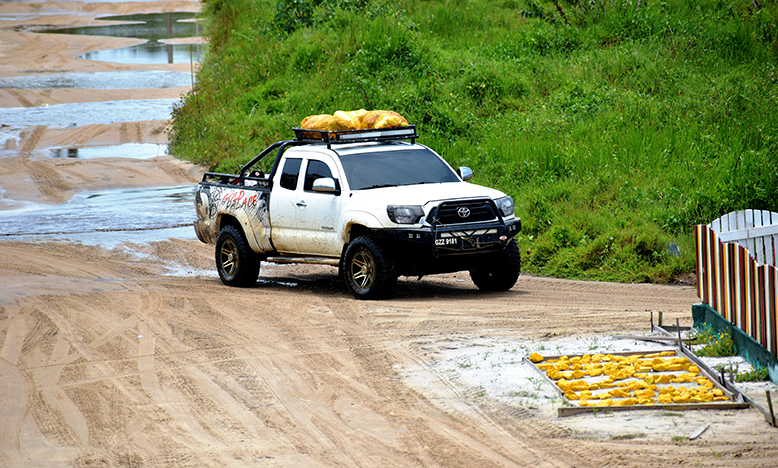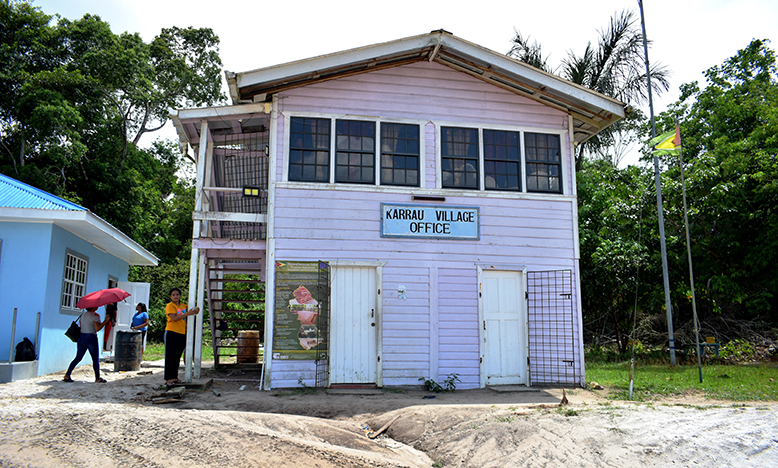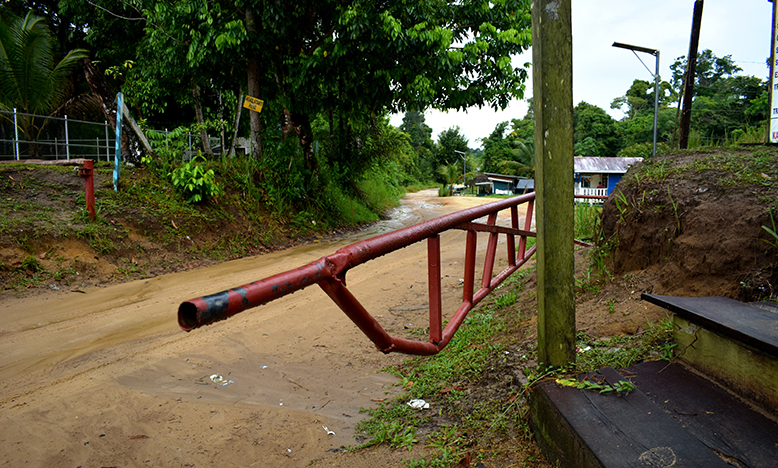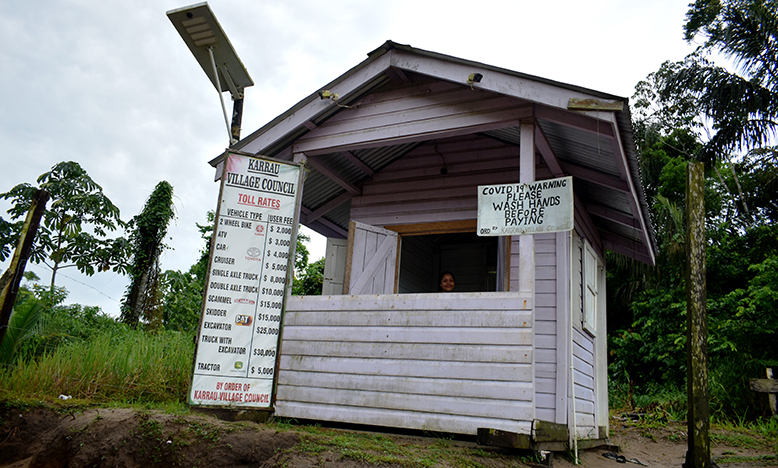A picturesque riverside village
LAST week the Pepperpot Magazine visited the riverside community of Karrau Village, Region Seven (Cuyuni-Mazaruni), in observance of Amerindian Heritage Month to highlight the way of life of the locals, who were preparing to host their heritage day on September 10.
Karrau Village is an Amerindian Settlement under the Village Council headed by Toshao Shane Cornelius and seven other members who are tasked with community-based development to enhance the lives of the people that reside there.
Karrau Village is located five to eight minutes via boat from Bartica, which is the nearest township.
Karrau is on the mainland, and it is located on the Lower Mazaruni River, with its neighbours being Goshen which is in Region 10 and Batavia.
A part of Karrau Village falls under Region Two and it is a village with fertile farmlands and the right soil composition for farming.
Karrau Village has a population of 530 residents with mixed ethnicities, with the majority being Amerindians.
Some locals who settled in the village came from Region One, Region Two, Essequibo Coast and Demerara River while most of the people have lived there their whole lives.
The main economic activities of the residents include logging, mining, poultry rearing, cash crops and ground provisions farming and small businesses.
Karrau Village is a picturesque place with lush rainforest, and it is the gateway to the interior, which goes all the way to the border between Venezuela and Guyana.
This village overlooks the Mazaruni River and it is quite a sight, the perfect place to watch the sunrise and the sunset while absorbing the ambience of tranquility.
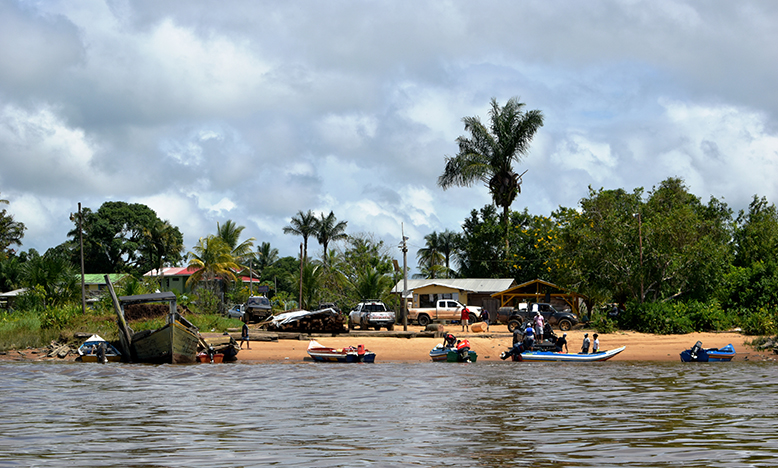
Karrau Village has a primary and nursery school housed in one building, a health outpost, and a playfield with a pavilion located at the centre of the community where the village council building is located.
The village also has a women’s club building, a toll gate and several shops at the roadside and scattered across the community.

Residents of Karrau Village will soon benefit from a $70M road project by the current administration to improve the lives of the locals, who never had an all-weather road in the community.
The road contract was awarded to JBS Investment Inc. to construct 2,000 kilometres of road in the community.
The village has no electricity and the locals use solar energy and some have their own generators.
The Village Council has internet access provided by the government and there is no landline service, but there is reception from both cell phone service providers in the village.
There is also an ICT hub at the Community Resource Centre building, which is yet to be commissioned, but it has 20 brand new computers.
Living at Karrau is expensive since the only mode of transportation is via speedboats and most people would do their bulk shopping in Bartica.
TOSHAO ON VILLAGE DEVELOPMENT
Toshao Shane Cornelius told the Pepperpot Magazine that they need more income-generating projects to provide steady employment for the villagers.
He added that mining and logging are seasonal, so often, people are without jobs and the Village Council is trying to initiate projects where locals can be employed to earn.

The village has launched a sawmill and it provides permanent work for six residents.
The women’s club building will be extended and a kitchen will be added to accommodate cooking classes to equip women with a life skill to start their own small businesses.
Cornelius disclosed that the community benefitted from $7M COVID-19 grant and it was used to buy an All-Terrain Vehicle (ATV) and make repairs to the Village Council’s tractor, which is utilised to transport logs.
He added that soon they will embark on a chicken project where 1,000 meat birds will be acquired to boost the livelihood of the locals.

So far, one chicken pen has been completed, and one more will be constructed in the village to house even more chickens.
Cornelius told the Pepperpot Magazine that last year they received a presidential grant of $1.5M and it was used to do many projects.
The Toshao disclosed that to promote farming in the village, they have identified farmlands which will be allocated to young people at one to 10 acres per person.
He explained that since young people are not attracted to farming, they will find ways to implement new techniques for them to go into farming and they have partnered with the government for a shade house project.
Cornelius stated that they have since received the materials and construction will take place later.
He related that the Community Service Officers (CSOs) will oversee the project and they will receive the necessary training needed and farming tools have been gifted by the current administration.
Cornelius reported that the Village Council controls the toll gate in the village and has staffers who are present at all times since vehicles pass through to different parts of the interior.

He pointed out that the Village Council has landscapers who take care of the environment by weeding the unwanted grass and they have office employees at the office of the Village Council.
The Toshao told the Pepperpot Magazine that the water well in the village was built in 2018 and the new building housing the Resource Centre will be the place for training for both children and adults where robotics will be introduced with other educational programmes.
Cornelius noted that the village has solar-powered street lights and 20 more was gifted to the village from the government and it will be installed soon.

He pointed out that they have made a proposal for a solar farm and are awaiting word but they would really like to benefit from electricity in the near future.
Cornelius reported that to improve the lives of the locals, a 10-year development plan was put together by the Village Council and they will complete it in October to be presented.
He added that an application was made for low-income housing and with their own sawmill materials can be provided for a reasonable cost.


.jpg)





